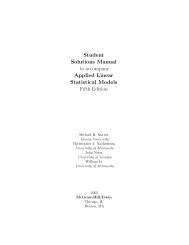Journal of Film Preservation - FIAF
Journal of Film Preservation - FIAF
Journal of Film Preservation - FIAF
You also want an ePaper? Increase the reach of your titles
YUMPU automatically turns print PDFs into web optimized ePapers that Google loves.
preserving those films for a purpose. We had the resources that scholars<br />
needed to do their work. We needed the help <strong>of</strong> scholars to help us make<br />
our decisions about acquisition, preservation, cataloguing, and so on. I<br />
should say that I did know an interesting group <strong>of</strong> scholars because <strong>of</strong> Jay<br />
Leyda, 41 the great film historian who was then in his last years teaching<br />
graduate courses at New York University. He had been teaching for some<br />
years a course on the Biograph films because they existed at MoMA and,<br />
to begin with, the early years were in the paper print collection at the<br />
Library <strong>of</strong> Congress. The paper prints had been copied onto film and<br />
become available (another factor in the renewed interest in this period),<br />
and Jay’s students were going through the Biograph films <strong>of</strong> the Griffith<br />
period, examining them chronologically,<br />
and then Jay would assign another year<br />
and get the students to work on that year.<br />
So, students started to come to MoMA for<br />
research. Anyway, that’s getting into more<br />
detail than we need to, but I just wanted<br />
to say that Brighton had its origins in a<br />
number <strong>of</strong> things: one was the presence <strong>of</strong><br />
Jay Leyda, another was <strong>FIAF</strong> itself. There was<br />
some discussion in <strong>FIAF</strong> about film history<br />
and the archives, and that we should do<br />
more about it.<br />
Eileen Bowser and Wolfgang Klaue in<br />
Lausanne, 1981.<br />
Who was representing this point <strong>of</strong> view<br />
in <strong>FIAF</strong>?<br />
Well, it came from Jacques Ledoux, Raymond<br />
Borde, Robert Daudelin, from myself, and<br />
from David Francis. I was the organizer <strong>of</strong><br />
the symposium in Montreal, at a <strong>FIAF</strong> Congress, a couple <strong>of</strong> years before<br />
Brighton, on the methodology <strong>of</strong> film history, and I must admit that wasn’t<br />
a terribly successful symposium. My fault. I invited a number <strong>of</strong> well-known,<br />
respected historians to speak about their work and about the methodology<br />
they were using, and they really didn’t tell us a lot about their methodology,<br />
but at least we established the idea that there was international interest in<br />
film history, and that it was a matter <strong>of</strong> teamwork between film historians<br />
and film archives and between countries to get these tasks done. So while I<br />
organized the Brighton group in New York, David was supposed to organize<br />
the Europeans to do the same, but he could not get them together for a<br />
session like the one we organized. Nevertheless they did come together<br />
for the week before the Congress, and there was a delegation from the<br />
group in New York which also went to London to meet with them. And<br />
we submitted a lot <strong>of</strong> films to be seen there. The National <strong>Film</strong> Archive<br />
did a wonderful job <strong>of</strong> printing up films in their collection. So it was a<br />
meeting <strong>of</strong> the historians and archivists, within <strong>FIAF</strong>, that brought about<br />
a renewal <strong>of</strong> interest and a total revision <strong>of</strong> film history in this period. The<br />
new movement resulted in Domitor, 42 the international group <strong>of</strong> scholars<br />
41 Jay Leyda (1910-1988), avant-garde filmmaker and film historian. He wrote and edited<br />
books about Melville, Dickinson, Mussorgsky, and Rachmanin<strong>of</strong>f, taught at Yale and<br />
Toronto during the 1960s and early 1970s, came to New York University in 1973, and held<br />
the Chair <strong>of</strong> Cinema Studies until his death.<br />
42 Domitor was one <strong>of</strong> the names considered by the Lumière brothers for their first film<br />
apparatus.<br />
41 <strong>Journal</strong> <strong>of</strong> <strong>Film</strong> <strong>Preservation</strong> / 81 / 2009
















